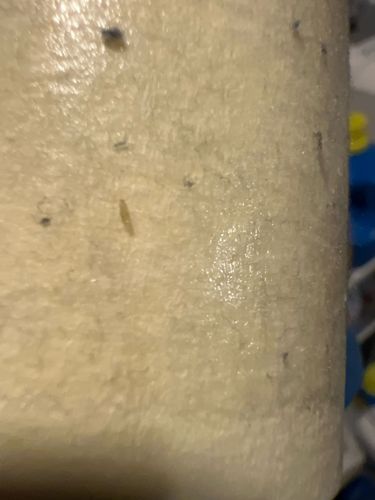Flesh fly larvae (maggots)
Scientific Name: Sarcophagidae (larvae)
Order & Family: Diptera, Sarcophagidae
Size: Larvae typically range from 5-20 mm in length

Natural Habitat
Found in decaying organic matter, carrion, feces, or occasionally in open wounds of living animals (myiasis)
Diet & Feeding
Decomposing flesh, including carrion and necrotic tissue; some species are parasitic on other insects or vertebrates
Behavior Patterns
Larvae are typically found in clusters actively feeding on their host material. They are known for rapid development, transitioning from egg to pupa in a matter of days depending on temperature and food availability. Their presence often indicates the decomposition of organic matter.
Risks & Benefits
Potential risks include being vectors for pathogens, causing myiasis (infestation of living tissue) in humans and animals, and being a nuisance pest. Benefits include their role as decomposers, aiding in the breakdown of organic material, and their use in forensic entomology to estimate time of death.
Identified on: 10/25/2025